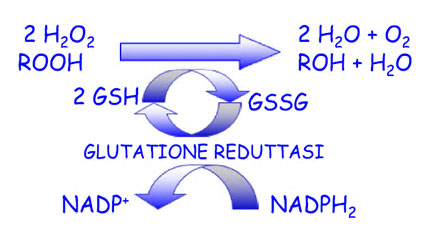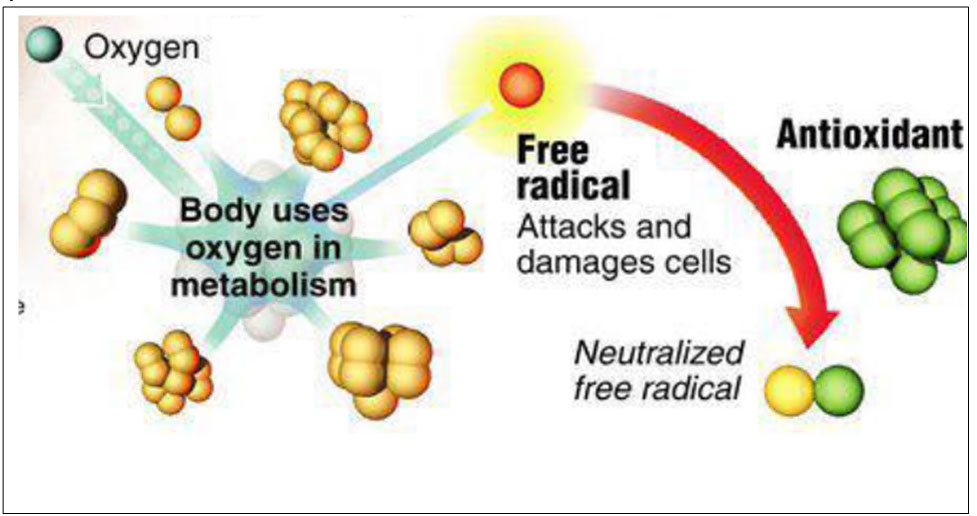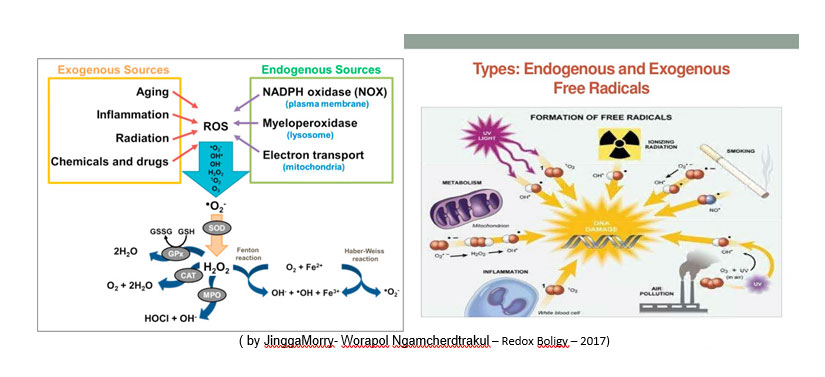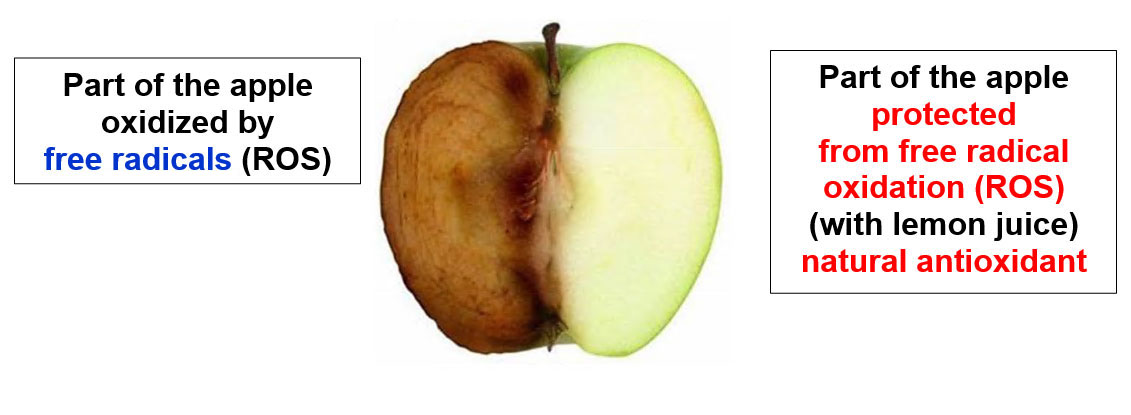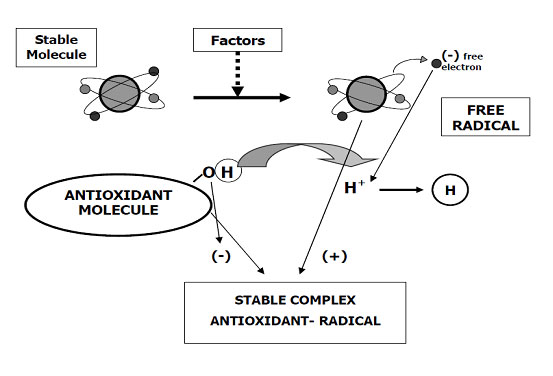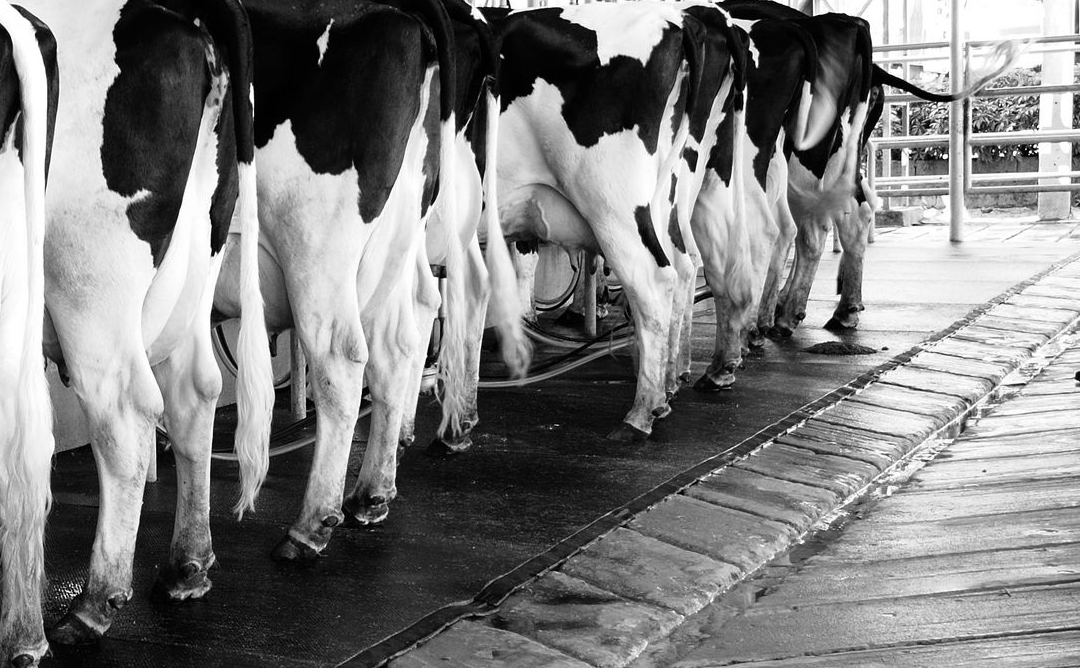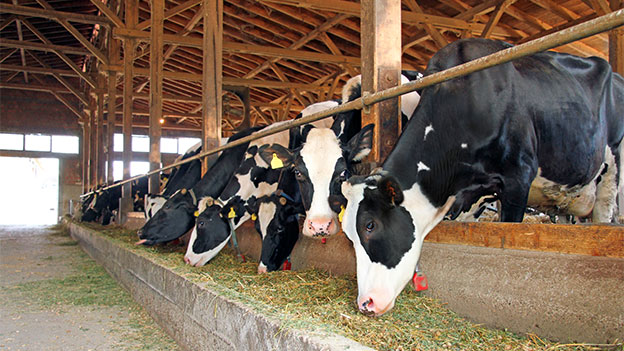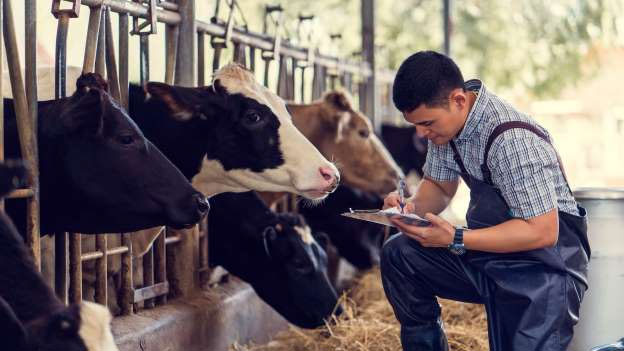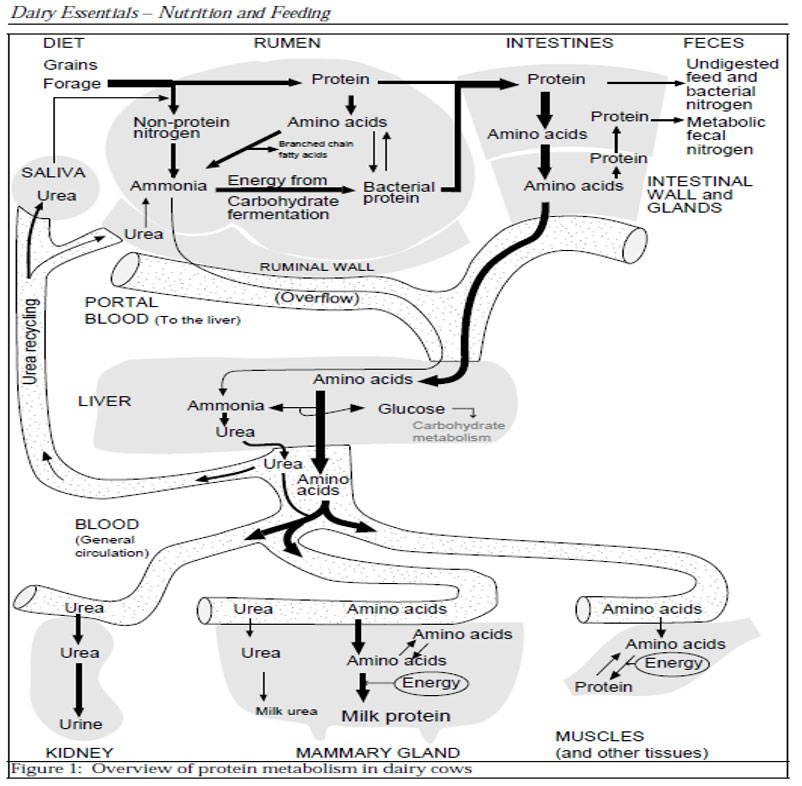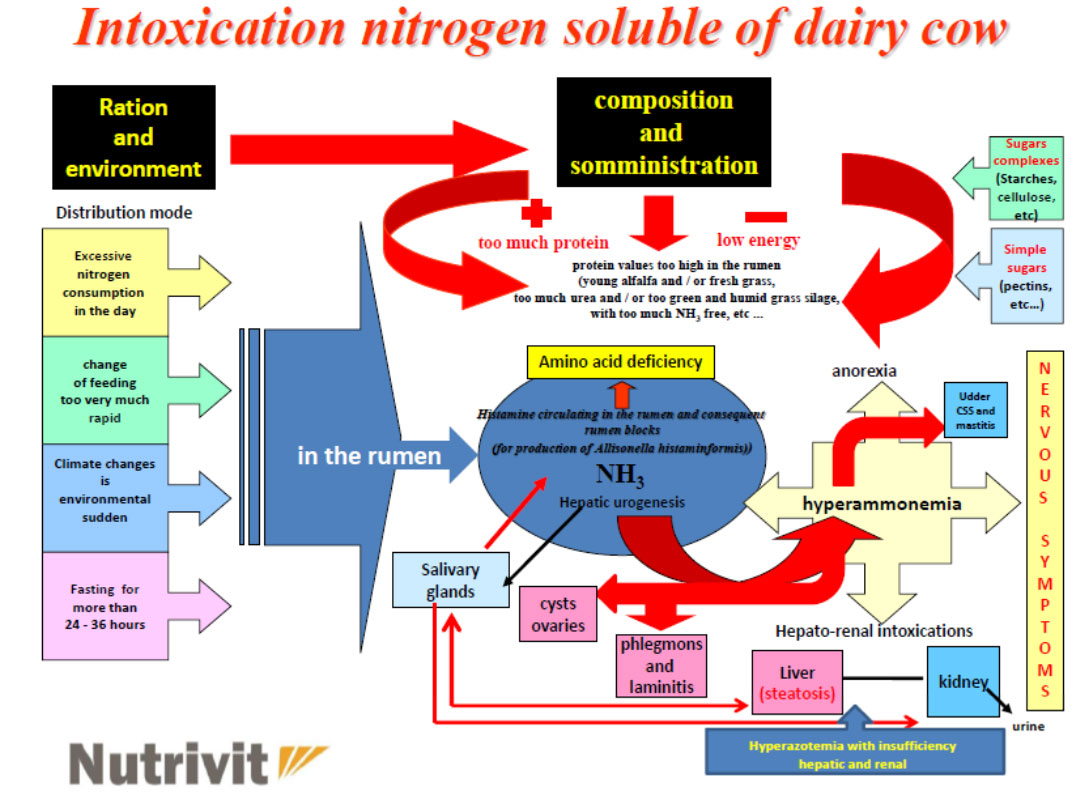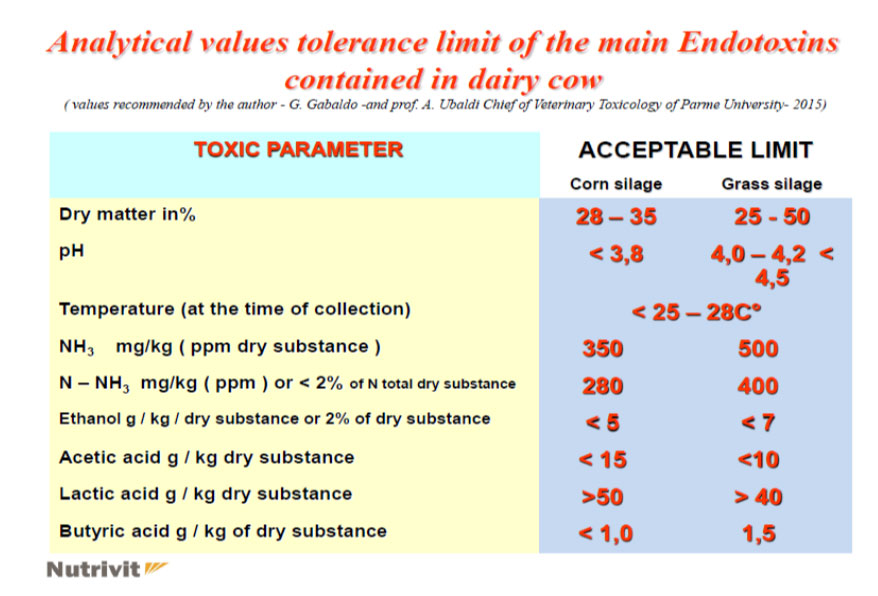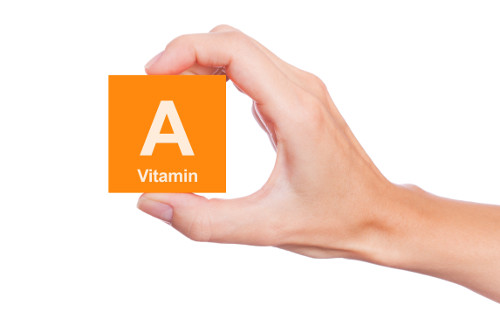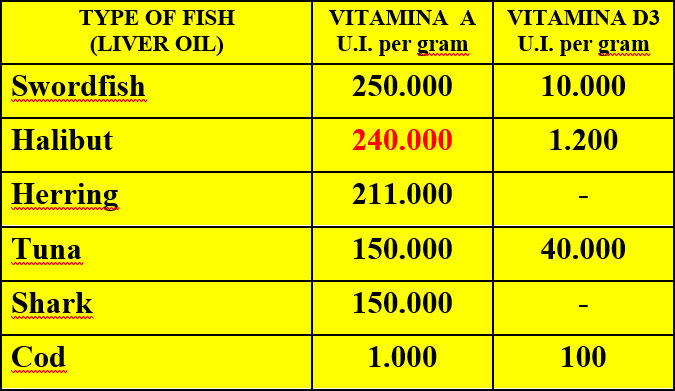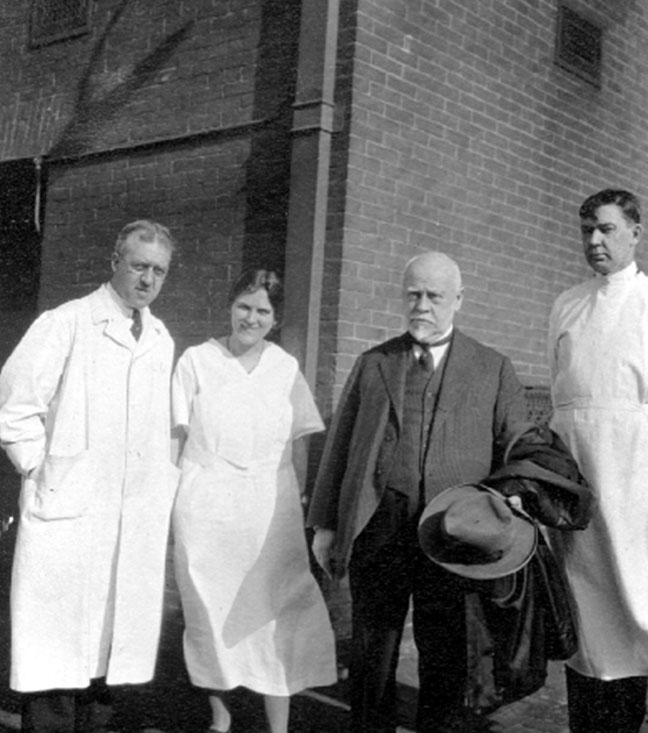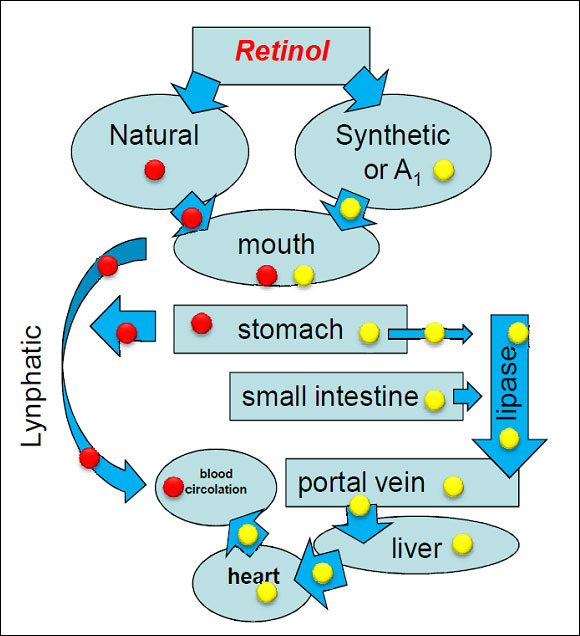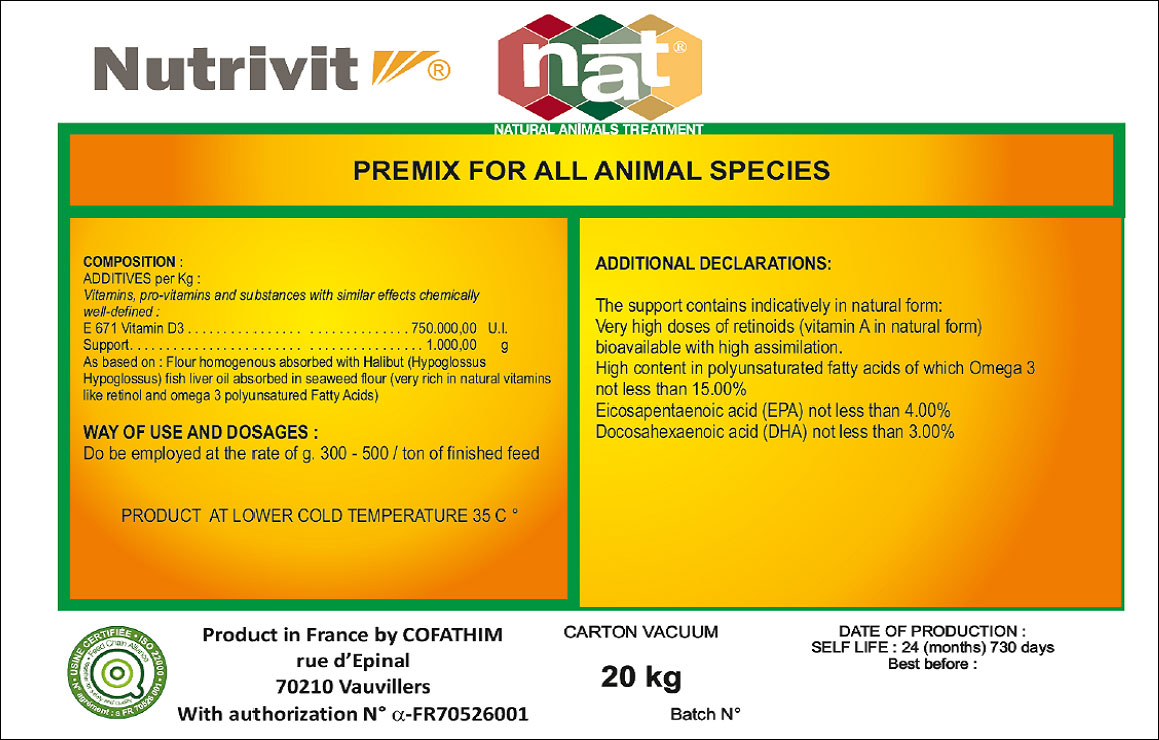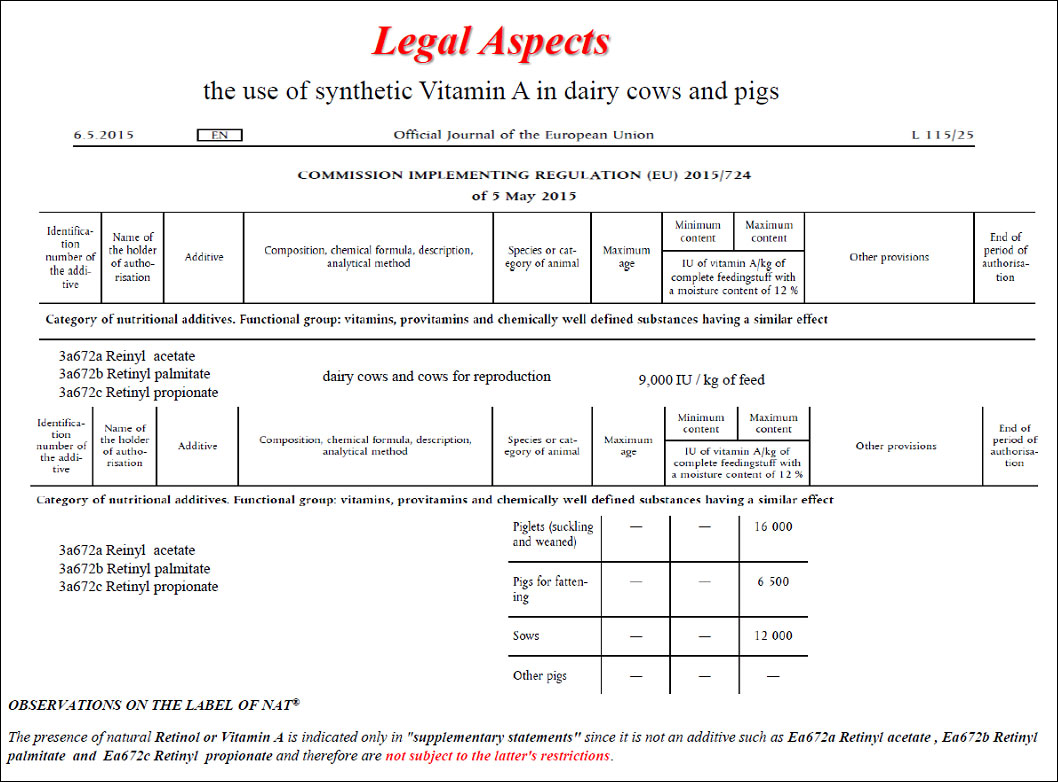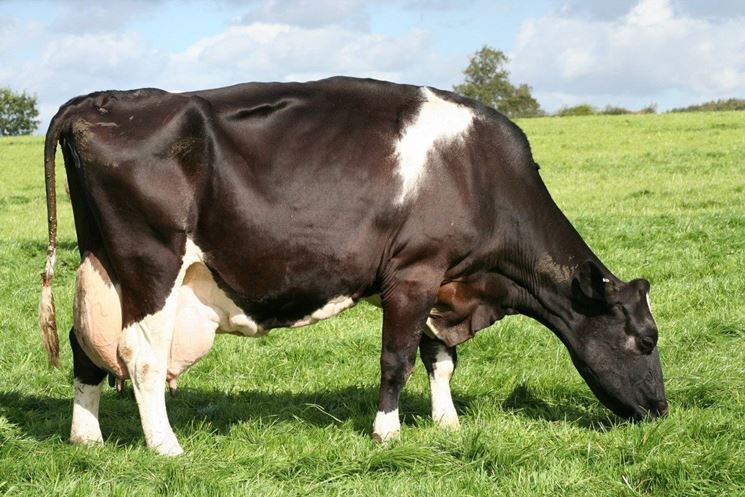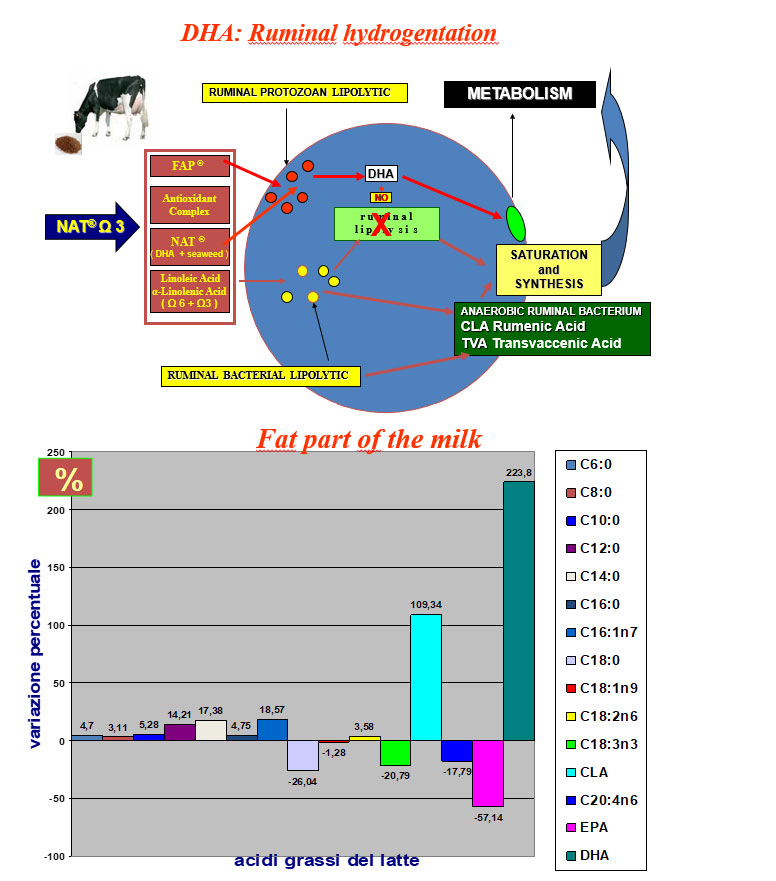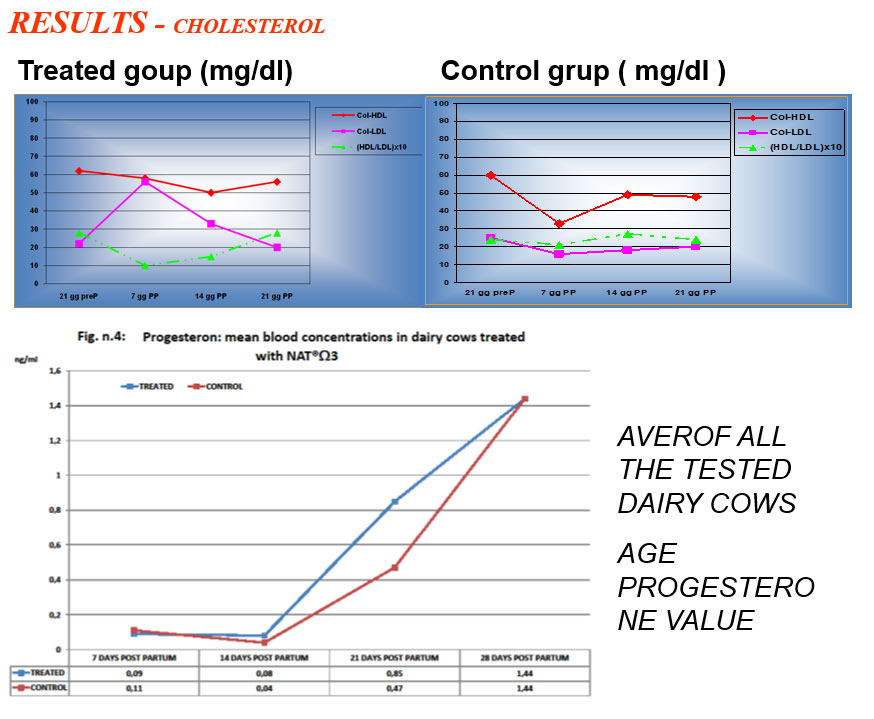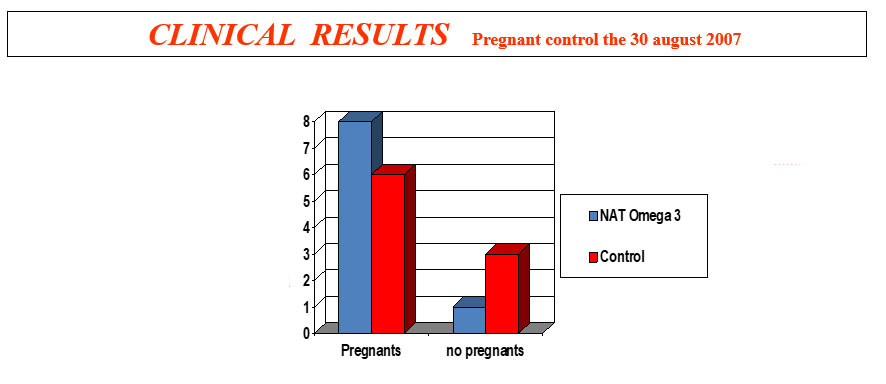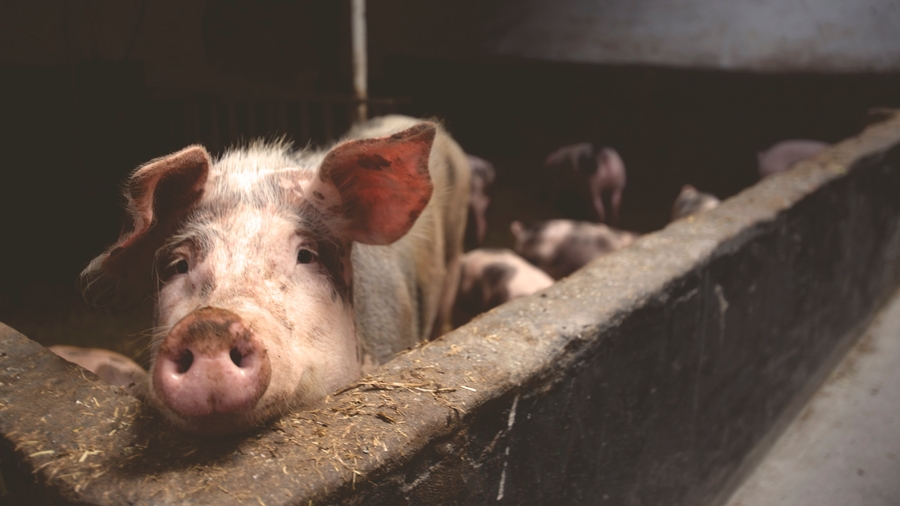
Uncategorized
Authors
Giulio Gabaldo DVM, PhD (1), Antonio Ubaldi ( 2), Angelo Montagner (3)
(1) Already Adjunct Professor in the Department of Animal Nutrition at the University of Parma) (2) Professor of Veterinary Medical Clinical Toxicology at the Department of Veterinary Sciences, University of Parma (3) Expert in Zootechnic of Estimation Statistics Valuation applied to livestock
Introduction
“…… The best employment opportunities in vitamins and trace elements in natural animal feed coming from the sea by oil, fish liver oil and seaweed . ” He used to say one of the most distinguished experts in animal nutrition of our days prof. Roger Wolter , research scientist and former Professor of Animal Nutrition at the École National Veterinary Alfor of Parisian University , and author of numerous books and publications on the subject. And that’s just the way it is worded NAT ® whose nutritional sources of marine origin are made in natural form. The NAT ® , in fact , is a complex nutritional concentrate based on fish oil (derived from the livers of halibut or Hyppoglossus Hyppoglossus ) adsorbed on marine algae naturally rich in Ω3 fatty acids ( eicosapentaenoic acid or EPA and docosahexaenoic acid or DHA) , Retinol (Vitamin A ) and Cholecalciferol (Vitamin D3 ) naural origin presented in the form of mini – granular ( cold granulation )
The study and the studies carried out have confirmed what we already knew in theory, that is, that the different chemical composition of the structural Natural Retinol ( against the synthetic formula that is different in structure, different atomic weights and different melting point ) will a different ” way of assimilation .” Natural Retinol , itself already emulsified , it is absorbed through the lymphatic and blood coming directly into it is immediately available in the ” metabolic circuit ” . Being the NAT ® , consisting of Vitamins ( contained in the oil Halibut ) and fatty acids (exclusively of natural origin contained in the ” pool” of algae) , is able to affect the levels of lipoproteins in the blood and the cholesterol level , precursor of progesterone. And ‘ finally emerged a correlation between the values of serological LDL and progesterone levels confirmed by an increase of at least 20 % of the levels of fertility in farms where it was tested . It is presumed that this value could be , in the future , used as a parameter to indicate the need to administer or not these nutrients. This is demonstrated by the data obtained in the various field tests carried out in the last two years, since Veterinarian Specialists in pig farms in different , totally separated from each other both in Italy and Spain . The NAT ® was administered in feed for sows kg at a dose of 0.5 to 1.0 / ton for the whole lactation except in two cases in which it was placed in a “reward” of g . 200-300 head / day administered to a nursing scofe week before weaning and continuing to the appearance of ‘ inspiration . In all cases the results obtained were truly extraordinary , of great interest and high profitability.
The tests carried
You have performed a series of field trials in Italy and in Spain in scrofaie of medium to large size with average size of 850 sows present in a total of nine farms and these 9 companies representing a total population of 5400 sows. The prevailing type of protocol has been to treat certain delivery rooms (20 to 30%) and use the salt part NOT treated as the control group. 2 companies have treated all the delivery rooms proceeding with the evaluation of the results by comparison of the time series. As regards the treatment of the sows, the treatment time was the lactation period (21 to 28 days). A particularly long test was performed in Spain, using the product in the feed from lactation, at a dose of 500 g / t for a full year (05/2012 → 05/2013) and comparing the data with the livestock ‘previous year (03 / 2011 → 04/2012).
Results
The results obtained were measured by analyzing the following zootechnical parameters:
- Interval weaning heat (ISC)
- Percentage of pregnant sows on the first insemination
- weaning weight
- Weaned piglets / sow year -1
- Interval between estrus / weaning ( the average value of the interval weaning estrus reduction was 2.5 days, with a minimum value of 0.9 and a maximum of 3.5 )
- Pregnancy rate to first insemination ( the average value of the improvement of pregnant sows to the first insemination was 13% with a minimum of 2.75 % and a maximum of 20.78 % )
Weaning weight
The average value of increased weaning weight was 0.9 kg with a minimum of 0.6 and a maximum of 1.2 , with an average weight of the piglets in the control and 7.11 kg of the treated group of 8 kg .
Weaned piglets / sow year
In the face of an average number of 23.92 svezzati/scrofa/anno-1 of control , the average number of the treated group was 26,43 thus having an average improvement of +2.6 weaned sow / year with a minimum of 1.06 and a maximum of 4.20.
Economic Results
Concerning the tests performed , in addition to ‘ zootechnical results analysis , was performed an economic evaluation therefore an enhancement of zootechnical improvements . The methods of economic calculation used were those of ‘ valuation parameters applied to the livestock so by referring to the ” ordinary farmer ” .
In the economic calculation , to determine the average cost of treatment is considered a lactation of 28 days and a dose of NAT ® 1 kg / t . He then proceeded to ‘ analysis of the economic benefit of quantifying the monetary benefit resulting from the improvement in livestock and more precisely:
- Reduce estrum weaning: the reduction of these times results in a reduction of downtimes of the sow ,
- Percentage of pregnant sows to the first insemination: this leads to a lower % of returns and again a reduction of downtimes
- Weight at weaning: get heavier piglets at weaning means selling higher value in the open loops and pigs have a greater increase in closed cycles
- Weaned piglets / sow year: the improvement of this parameter leads to a more productive course of ‘ farming is that you sell weaned piglets fat
The calculation of the return of ‘ investment (ROI) is calculated in € compared to the cost of the treatment and after the cost of the treatment itself . The return of ‘ investment resulting from the calculations is represented by the following figures.
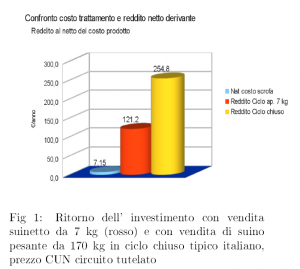
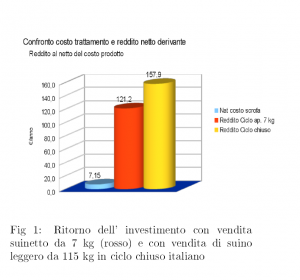
Fig 1 : Return of ‘ investment with weaner sale 7 kg (red) and with sales of heavy pigs from 170 kg in a closed cycle typical Italian , price CUN circuit protected
Fig 2 : Return of ‘ investment with weaner sale 7 kg (red) and with sales of light pigs from 115 kg in closed loop Italian
Conclusions
From ‘analysis of the data it is evident the significant return of’ investment ( ROI ) in so much with open loop that with and in closed loop where, however, brings the best results. This is obviously due to the fact that improving the fertility of the sow, on equal terms I definitely a greater production of live weight.
Bibliography
Alimentation des animaux domestique: porc,lapin,volailles, Ed.INRA Paris, 1984.
Enminger, E. & Olentine, C.G. ” mangimes & Nutrition, complete ” The Ensminger Publishing Company, First Edition, California, 1980.
GRUMMER RR,, CARROLL D “A review of lipoprotein cholesterol metabolism: importance to ovarian function “J Anim Sci. 1988
BENAHMED, M, REVENTOS J, SAEZ JM “ Rôle des lipoprotéines plasmatiques dans la fonction des tissus stéroïdogènes “ Symposium Horm et Méta des lipoprotéines ¨C Lyon 1983
Guyton A. ” Textbook of medical Physiology ” Sixt Ed.W.B. Saunders Company, Philadelphia, USA
Jouany J.P. – Lassalas B. ” Vitamine by-pass ” Doc.Veterinari, 1989
Jennings, I. ” Vitamin in the Endocrin Metabolis ” Charles C.Thomas Springfield, Illinois, 1970.
Piccioni, M. ” Dizionario degli Alimenti per il bestiame ” Edagricole, Bologna, 1989.
Krampitz, G. ” Vitamin D in der Tierernahrung ” Ed. Hoffman – La Roche, Basilea, 1980.
Russell Mc Dowell, L. ” Vitamin in Animal Nutrition ” Accad. Press.Inc.,San Diego, California,1989.
Gabaldo G. “ Vitamins e trace elements in the nutrition of high yield Dairy cows “ Ed.Nutrivit Co. ¨C New York, 1999
Klaus, W. – Dressler, D. e Coll. ” Vitamin in Animal Nutrition ” A.W.T. Bonn, Germany, 1984
Kornegay, E.T. ” Nutritional Factor Affecting Swine Riproduction: “ Mineral e Vitamin ” Symposium on Nutritiona Disease San Paulo, Brasil, 1985
Siliprei D. e N. ” Biochimica Struttrale ” e ” Biochimica Metabolica ” Ed.Cortina, Padova, 1983.
” The Complete Book of Vitamins ” Staf of Prevention Magazine Roale Press Inc.Emmaus,USA,1988.
Thangavelu g, Colazo M, Ambrose D. Y, Oba M, Okine E.K, Dyck M.K, “ Embryo Development is Enhanced in Dairy Cow Fed Unsaturated Fatty Acids” Dep.Agric. Food e Nutritionaò Sc, Univ. of Alberta -DRTC Dairy Day ¨C 2006
Thatcher WW, MacLaren, LA Guzeloglu, A Michel F, “Peroxisome Tabellaators-activated receptor (PPAR) expression in cultured bovine endometrial cells e response to omega-3 fatty acid, growth hormone e agonist stimulation in relation to series 2 prostaglein production. “Domestic Animal Endocrinology -2005- USA
Lessard M, N. Gagnon e H. V. Petit “Immune Response of Postpartum Dairy Cows Fed Flaxseed “Dairy e Swine Research e Development Centre Jagriculture e Agri-Food Canada, Lennoxville, QC, Canada ¨C Journal of Dairy Sci. 2003 – USA.
Petit HV, Dewhurst RJ, Scollan ND, Proulx JG, Khalid M,Haresign W, Twagiramungu H,Mann GE. “Milk production e composition, ovarian function, e prostaglein secretion of dairy cows fed omega-3 fats” Dairy e Swine Research e Development Centre Jagriculture e Agri-Food Canada, Lennoxville, Journal of Dairy Sci ¨C 2003 ¨C USA
Cattell Meg “ Omega 3 boosts fertility “ Vance Publishing Corp ¨C Knightsbridge Pkwy Lincolnshire IL ¨C 2006 ¨C USA
Loppi, B, Merendino N, Bosco L. “ Meccanismi coinvolti nell’effetto pro-apoptotico dell’Acido Docosaesaenoico (DHA) nella linea cellulare di Adenocarcinoma Pancretatico umano Pa Ca ¨C 44 “ Univers. Degli Studi della Tuscia VT ¨C dott. Ric Gen e Bio cell. ¨C VT ¨C 2005.
Ciaccio M, “ Gli Acidi Grassi Omega 3 ed Omega 6 dalla biochimica all’applicazione “ Cattedra di Biochimica ¨C Facoltà di Medicina e Chirurgia Università di Palermo ¨C 2002 ¨C Italy
Copozza C. “ Acido Linoleico Coniugato ( CLA) Cosè il CLA ? “ omeonet,info/articoli/acido linoleico ¨C 2001
Ruffini E, Caramia G. “ L’Acido Docosaesaenoico ( DHA) , aspetti fisiopatologici e prospettive Terapeutiche “ Azienda Ospedaliera Materno Infantile
Ancona Dipartimento Maternità Infantile di Ascoli Piceno ¨C www.bambinoprogettosalute.it¨C 2005 ¨C. Ancona – Italy
De Caterina R, Madonna R. “ Effetti antiaritmici degli Acidi Grassi Omega 3, una rassegna “ Unvesità “g. d’Annunzio “ Chieti Ist. Di Fisiologia Clinica Ed. Ital Heart J. Spple. ¨C 2002 ¨C Italy
Mataix FJ, Santos MJ, Lopez-Jurado M, Llopis J, Urbano G “Influence of dietary supplementation with fish on plasma fatty acid composition in coronary heart disease patients” Department of Physiology, University of Granada – Ann Nutr Metab. 1995 ¨C Spain
Santos MJ, Llopis J, Mataix FJ, Urbano G, Lopez Jurado M. “Influence of dietary fish on fatty acid composition of the erythrocyte membrane in coronary heart disease patients” Department of Physiology, University of Granada ¨C Int J Vitam Nutr Res. 1996 ¨C Spain
Lopez C, Eynard AR, “Conjugated linoleic acid (CLA) versus saturated fats/cholesterol: their proportion in fatty e lean meats may affect the risk of developing colon cancer “1Instituto de Biología Celular, Cátedra de Histología, FCM-UNC/CONICET. Córdoba. Lipids Health Dis. 2003 Argentina
Bertoni G. “ Dismetabolie puerperali e rapporti con il sistema immunitario, l’attività epatica e la riproduzionefondazione” Iniziative zooprofilattiche e Zootecniche ¨C Brescia, 2003
Benahmed, M, Reventos J, Saez JM “ Rôle des lipoprotéines plasmatiques dans la fonction des tissus stéroïdogènes “ Symposium Horm et Méta des lipoprotéines ¨C Lyon 1983
Mariani AP, Podestà A “ Biochimica e biotecnologie del Rumine “ pag. 61 Ed. Piccin ¨C PD ¨C Italy 1996
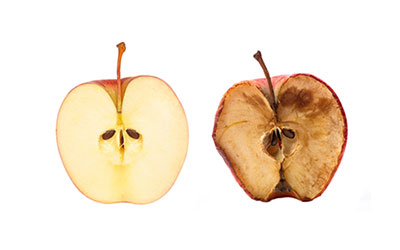
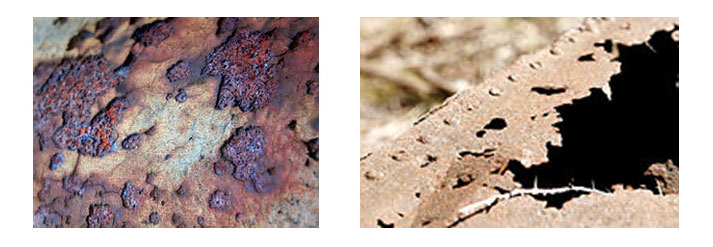 Piece of oxidized metal (corroded) – Corrosion
Piece of oxidized metal (corroded) – Corrosion